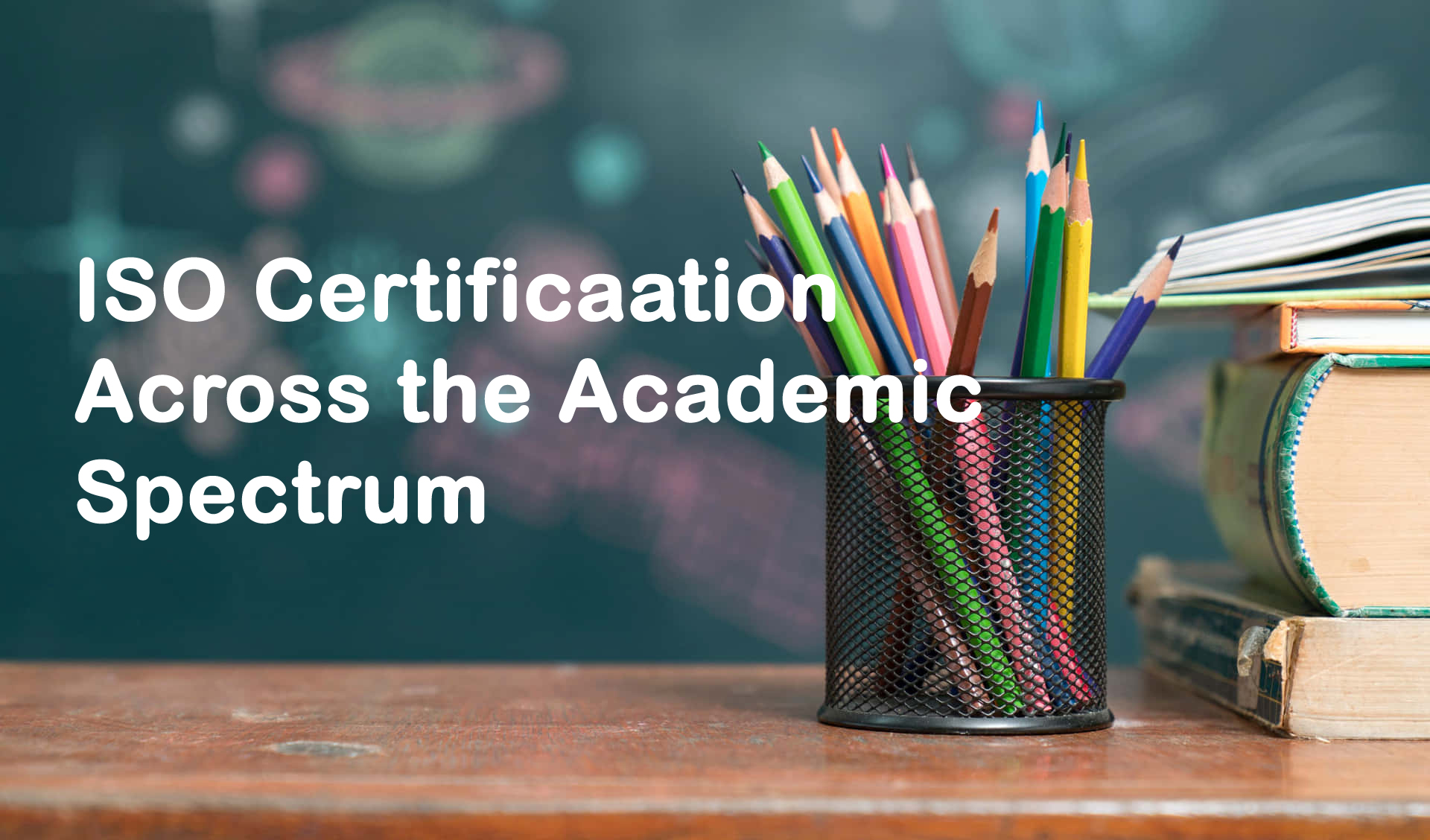ISO Certification Across the Academic Spectrum
In an era where quality education stands as a pillar for future success, institutions ranging from preschools to colleges are increasingly seeking ISO Certificate as a mark of excellence. This prestigious certification not only underscores their commitment to providing high-quality education but also sets a global standard across all levels of academic instruction. Let’s explore the significance, benefits, and process of obtaining ISO certification for schools, colleges, and preschools, and how it transforms the educational landscape.

A Unified Standard of Excellence: The Impact of ISO Certification
ISO (International Organization for Standardization) certification provides a framework for educational institutions to enhance their operational efficiency and educational quality. This certification spans various aspects of the academic experience, including curriculum development, teacher training, student services, and management processes, ensuring a comprehensive approach to quality education.
The Spectrum of Benefits: From Preschool to College
Building a Foundation of Trust
ISO Certificate serves as a beacon of trust and reliability for parents and students, indicating that the institution meets international standards of education
Cultivating a Culture of Continuous Improvement
The process of obtaining and maintaining ISO Certificate encourages a culture of ongoing self-evaluation and improvement, ensuring that institutions remain at the cutting edge of educational practices.
Enhancing Global Recognition
For institutions aiming to attract a diverse student body and forge international collaborations, ISO Certificate offers global recognition, setting them apart as leaders in education.
Streamlining Operations
The certification process helps identify inefficiencies and streamline administrative and educational processes, leading to a more effective and focused learning environment.
Navigating the Path to Certification: A Roadmap for Institutions
Step 1: Commitment to Quality
The journey begins with a commitment from all levels of the institution to adhere to ISO quality standards, fostering an environment dedicated to excellence.
Step 2: Gap Analysis and Planning
Institutions must conduct a thorough gap analysis to identify discrepancies between current practices and ISO Certificate, followed by a detailed action plan to address these gaps.
Step 3: Documentation and Implementation
Developing a comprehensive documentation of all processes and systems in accordance with ISO standards is crucial, followed by the implementation of these practices across the institution.
Step 4: Training and Engagement
Ensuring that all staff members are trained and fully engaged with the ISO standards and practices is key to a successful certification process.
Step 5: Internal Review and Adjustment
Before the external audit, institutions should conduct an internal review of their practices, making necessary adjustments to ensure compliance with ISO Certificate.
Step 6: External Audit and Certification
An external audit by an accredited ISO body will assess the institution’s adherence to the standards. Successful completion of this audit results in ISO certification.
Step 7: Ongoing Improvement and Recertification
ISO certification is not an endpoint but a milestone in a continuous journey of improvement. Regular reviews and updates to practices ensure that institutions not only maintain but enhance their quality standards.
Conclusion: Shaping Futures Through Quality Education
ISO Certificate for educational institutions, from preschools to colleges, represents a commitment to excellence, quality, and continuous improvement. It not only elevates the institution’s standing on a global scale but also ensures that students receive an education that prepares them for the challenges of the future. By embracing ISO Certificate, educational institutions affirm their dedication to shaping a brighter, more informed world through quality education.